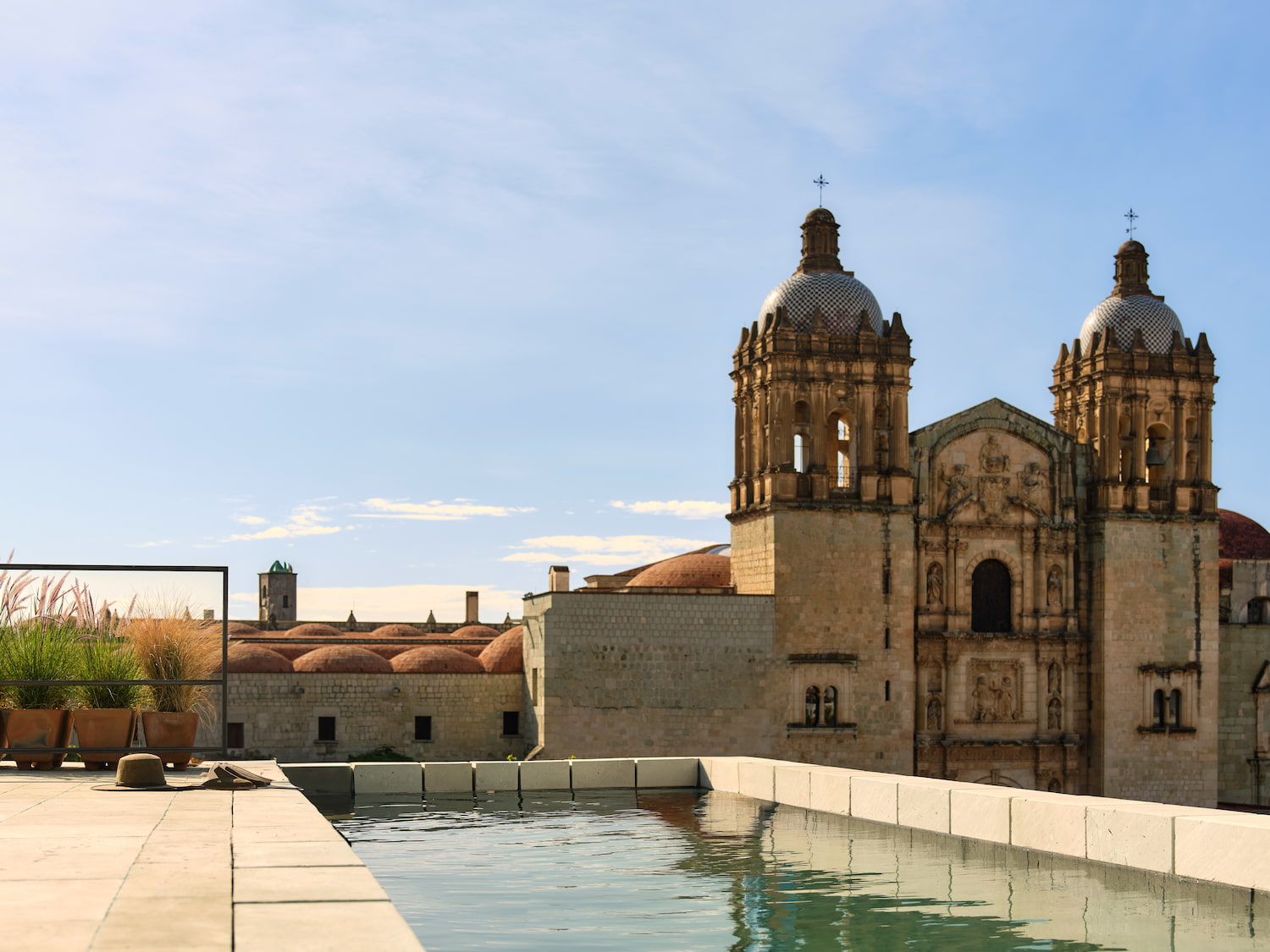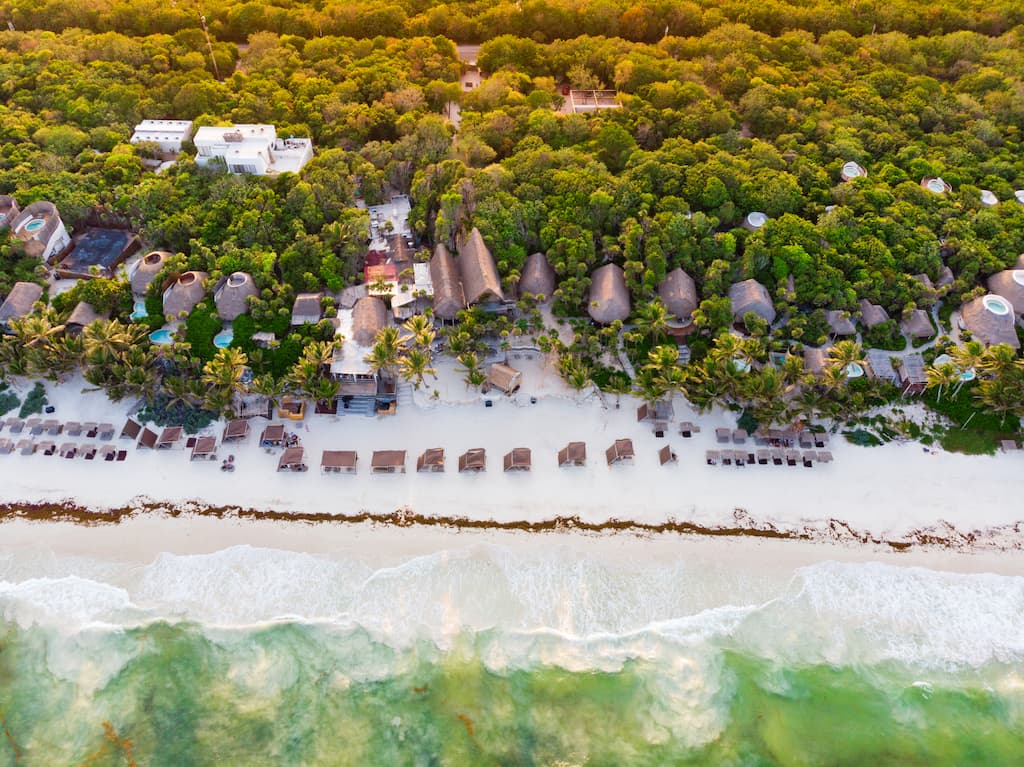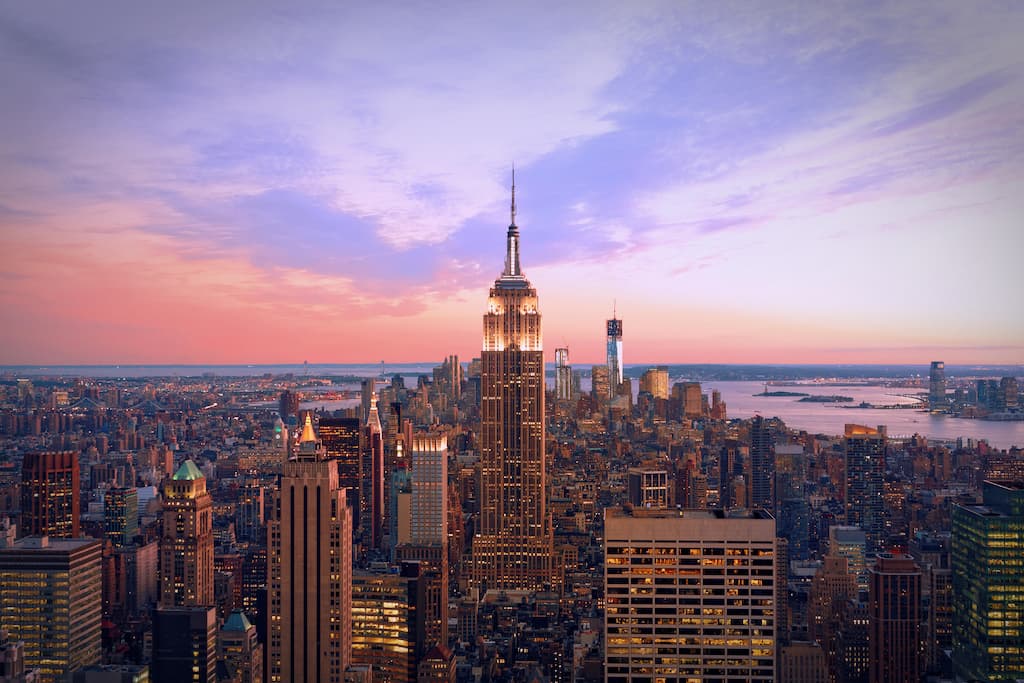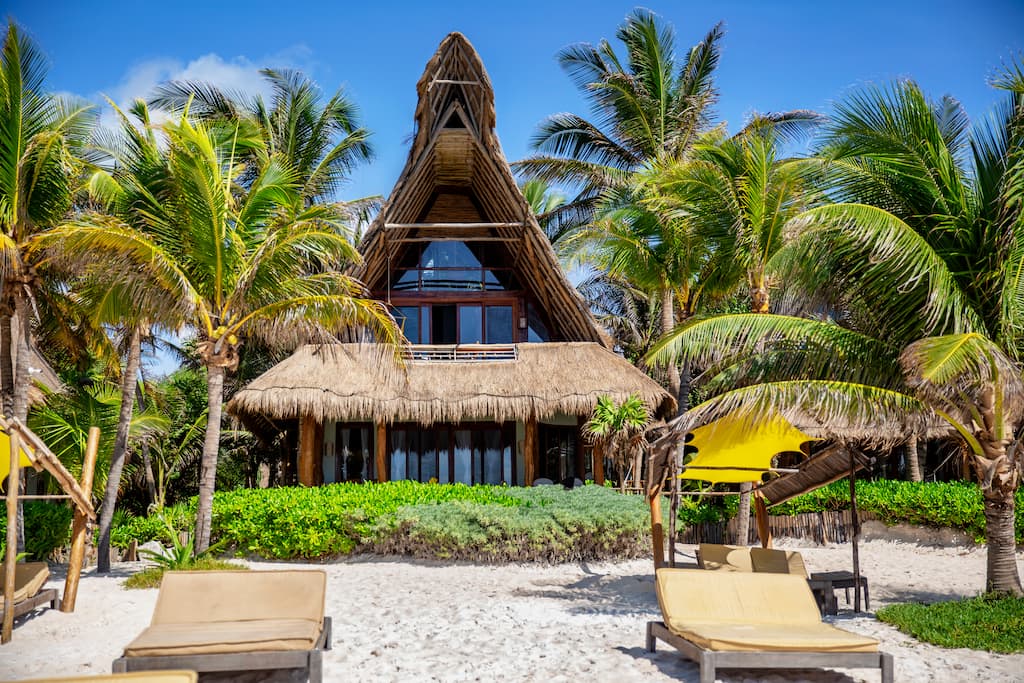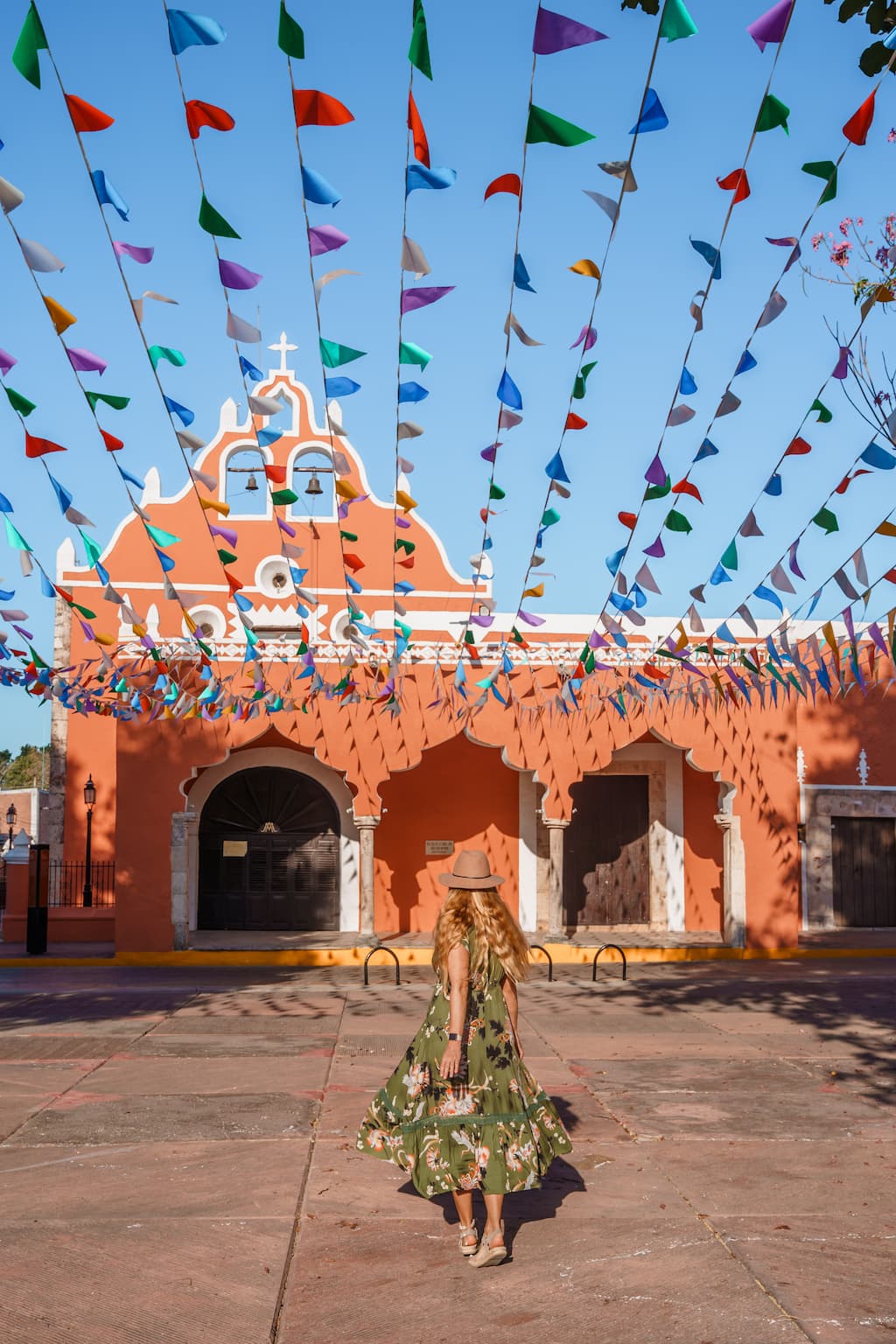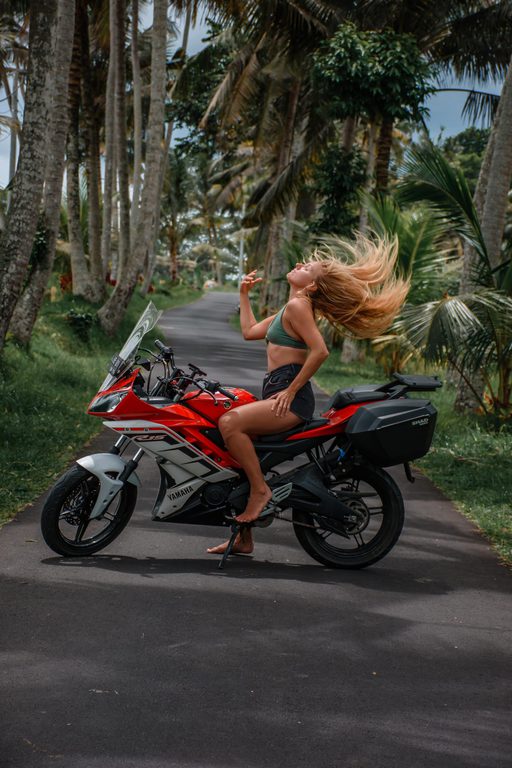Drinking Water In Mexico: What’s Safe? What’s Not?

If you are planning a trip to Mexico you may be asking yourself if the drinking water in Mexico is safe to drink.
Travellers regularly ask this question before visiting new and unfamiliar destinations, and Mexico is no exception. The question of can you drink the water in Mexico should be part of every well-prepared traveller’s trip planning.
Many visitors may think that tap water in Mexico is safe to drink as the country has good tourist infrastructure, particularly in high-volume areas such as Mexico City, Cancun and Acapulco. Unfortunately, residential tap water, water in self-catering accommodation, hotel tap water and even water in Mexico resorts is NOT safe to drink.
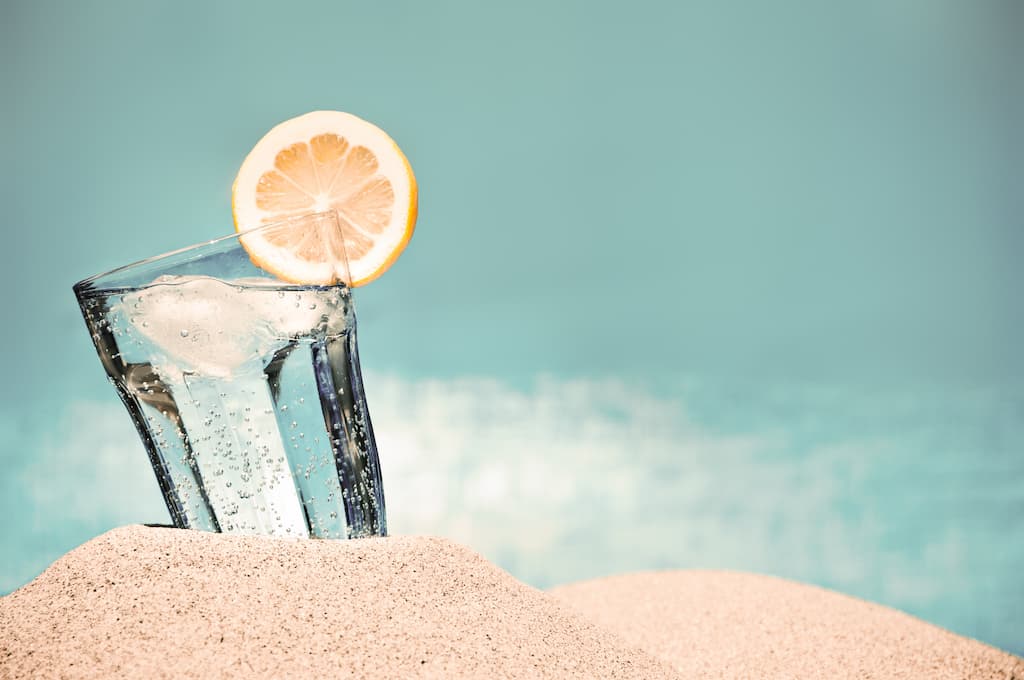
This article will explain why it is not safe to drink the water in Mexico, how you can best protect yourself and what alternatives you can pack to ensure you stay hydrated and healthy on your Mexican vacation.
Disclaimer – All information is correct at the time of publication. We do not accept any responsibility for inaccurate advice found within this article. Always seek professional medical advice if you think you or your child is sick or before taking any over-the-counter or prescribed medication.
🫗 Drinking Water in Mexico
Mexico is a large country with various states and regions that differ widely in population, resources, wealth and infrastructure.
In some areas, there are modern public water systems in excellent condition, and local people will happily and safely drink water from their tap or faucet.
In other regions, the local water system is old, underfunded and not fit for purpose, and the locals never touch the water. According to Water.org, 73 million people in Mexico (which is equivalent to 57% of the population) lack access to a reliable, safely managed source of water.
Some areas, such as Chiapas, have a reputation for people getting sick from drinking local water, so if you are asking yourself, ‘is the water in Mexico safe to drink’ how can you, as a traveller, reliably know the answer to this question?
The simple answer is that you can’t. As a traveller, it is impossible to know what is and what isn’t a clean, safe and reliable source of drinkable water.
Therefore, it makes sense to apply the no drinking water rule to the whole country, no matter where you are and what type of accommodation you are staying in.

🚰 Can you drink tap water in Mexico?
If you have been wondering is it safe to drink tap water in Mexico, the short and simple answer is no. Why is the water in Mexico bad to drink is a little more complicated.
Water in Mexico comes from a variety of sources, including reservoirs and underground sources. It is generally purified and cleaned at the source or in large water treatment plants. However, filtration standards vary, so the water that flows out of the various treatment plants is cleaner and safer in some places than in others.
From the processing plants, the water is dispersed to surrounding suburban areas, and again, water systems in Mexico vary in standards. Some water flows through aged, rusty, leaking or broken pipes, which could (and can) allow the water to be contaminated with bacteria and viruses.
Plus, Mexico water has a high heavy metal content which can also make you sick.
It is better to err on the side of caution whilst travelling in Mexico and avoid tap water in all parts of the country at all times. This also includes any drink which is made using local water, such as juices or soda.
💧 Drinking Water In Mexico Resorts
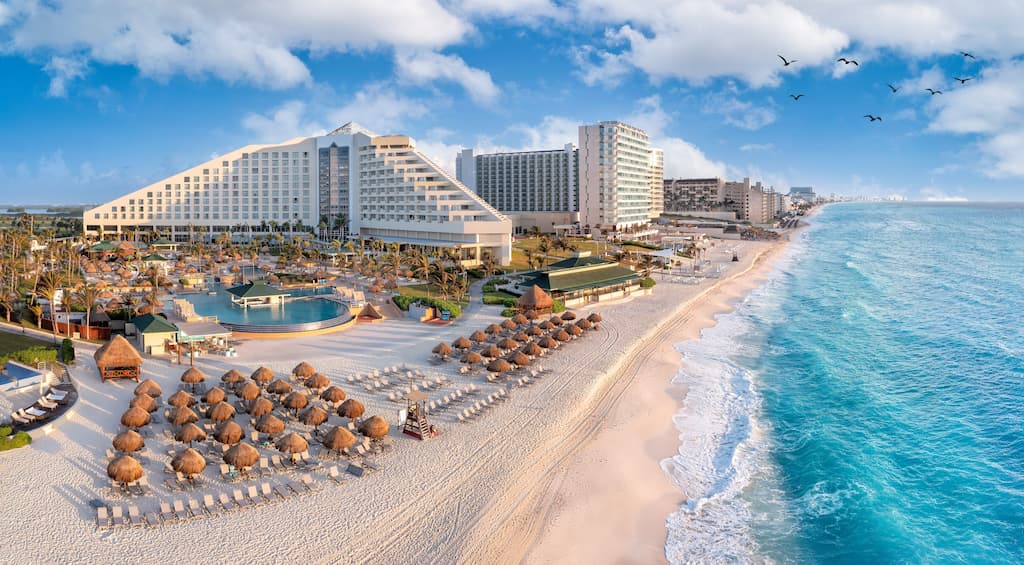
It can be easy to think that tap water in a luxury 5-star resort will be safe to drink. Unfortunately, this is not the case.
The water in high-end resorts comes from the same sources and travels through the same pipes as everyone else’s water. It doesn’t matter how plush your hotel is, don’t drink the water.
You can find safe, bottled drinking water in Mexico resorts at on-site restaurants and bars. Plus, there are usually large water dispensers in hotel lobbies and dotted around sprawling resorts.
A limited amount of in-room bottled water is usually supplied when you arrive at your hotel and resort, and it is generally restocked each day.
There are a few hotels that have recently installed filtration systems in communal spaces for guests to use. These will be heavily advertised when booking or upon arrival. The filtration taps will be labelled ‘potable aqua’ or ‘agua potable’, but if in doubt, always ask the hotel staff before drinking.
If you wish to use a reusable water bottle for agua potable to save plastic waste, it is advisable to wash your water bottle thoroughly with boiling water each day to avoid any build-up of bacteria.
PRO TIP
Always check that the bottled water in your room is free of charge; otherwise, you could get a nasty surprise of a large minibar bill when you check out.
If you have to pay for the water at your hotel, buy it from a local grocery store instead, as it will undoubtedly be cheaper.
💧 Drinking Water In Mexico City

Travellers often wonder can you drink the water in Mexico City as the city is modern, well-developed and has excellent facilities.
However, the general opinion is that water in Mexico City is not safe to drink. Even the Mexicans who live there use bottled water or personally harvested rainwater.
You will frequently see trucks driving around Mexico City which are packed with enormous 20-litre water dispensers (called garrofones). These trucks deliver the purified water to people’s homes and collect their empty containers for sterilisation and re-use. In fact, Mexico is the world’s number one for per capita consumption of bottled water.
PRO TIP
Safe bottled water is available everywhere in Mexico and in Mexico City.
You can reduce plastic waste by buying the biggest bottle or dispenser you can find and keeping it in your hotel room or apartment fridge to refill your daily reusable water bottle.
If you can, find a grocery store that will take back your large empty bottle for sterilisation and reuse or for recycling.
🧊 Ice In Mexico

Unfortunately, as drinking water in Mexico is not safe, any ice made from tap water should also be considered unsafe. Unless you can 100% guarantee how the ice was made, it is best to avoid it, no matter how tempting it may be on a hot day.
As most Mexicans use bottled water to make ice, most restaurants and hotels will do the same. You can ask the server or hotel staff how their ice is made, but you will have to rely on their answer as evidence. If you want to avoid all risks, you must avoid all ice.
PRO TIP
Before you go out for your busy sightseeing day, leave bottled water or purified water in the fridge in your room. When you return hot and tired, you can enjoy ready-to-drink cold water.
Alternatively, if you are self-catering, pack an ice cube tray in your luggage. Ice cube trays are small and lightweight and won’t take up much space in your bags (especially silicone ice trays).
When you arrive at your Airbnb, fill the ice tray with bottled water and pop it into the freezer compartment of the fridge for your very own supply of safe ice.
Remember to regularly and thoroughly wash the ice tray with soapy hot water to avoid the build-up of bacteria.
🥗 Eating salads in Mexico

Hot sunny weather means indulging in cool, light, refreshing salads, right?
Unfortunately, that is not the case when dining out in Mexico. What you think may be healthy eating could land you feeling very unhealthy if the salad has been washed in tap water. It is essential to avoid all salads unless you know how the salad has been washed and prepared.
However, as most Mexicans wash their salads at home using bottled water, it is reasonable to expect that many restaurants, cafes and hotels will do the same. It is worth bearing in mind, though, that restaurants and hotels do not want to gain a damaging reputation for making their guests sick.
Eating where the locals eat is generally a good sign that the restaurant is trustworthy. You can ask your server how the salad was washed, but again, there is no guarantee that the salad has been washed with purified water unless you see it for yourself.
If you are self-catering, always wash your salads thoroughly using bottled water. It may seem like an extravagant waste of bought bottled water, but it is better to be safe than sorry.
Alternatively, for peace of mind, avoid salads and stick to cooked food for the duration of your trip.
It is essential to note that this salad rule also applies to fruit that you eat with the skin on, such as apples and berries. Unless you know that the fruit has been washed in bottled water, stick to fruit that requires peeling, such as oranges or bananas.
PRO TIP
Salad leaves, fruit and root vegetables may contain residual bacteria, which can be difficult to remove just by washing with bottled water.
If you choose to eat fruit with the skin on or salad leaves, do what the locals do and use Microdyn for washing your fruit, salads and vegetables.
Microdyn is a special antibacterial iodine-based solution which is widely used by Mexican families. You can buy Microdyn online before your trip or pick it up in local grocery stores such as Chedraui, OXXO or Superama.
Simply fill a clean bowl with bottled water, add a few drops of Microdyn and leave your fruit and salad to soak in the water for around 15 minutes. Rinse with bottled water before eating.
🍳 Cooking With Tap Water In Mexico
If you are planning to self-cater and wondering, ‘can I cook with tap water in Mexico’ the short answer is yes – as long as you do it properly.
It is safe to cook with tap water in Mexico as long as you are boiling the water for a considerable amount of time, usually in excess of five minutes. For example, it is safe to cook pasta or boil an egg with tap water.
However, there may be an unpleasant residual taste to the food from the water, and as bottled water is so cheap and safe, it would be worth cooking your food using bottled water just to be sure.
🧽 Washing dishes in tap water in Mexico
It is generally considered safe to wash dishes in tap water in Mexico as long as you use a soapy detergent and very hot water.
🛀 Showering With Water In Mexico
Showering with water in Mexico is safe, although it is advisable to try to keep your mouth shut and not swallow any water.
It is essential to remind kids to do this or to supervise their showers, or even better, give them a bath!
🚰 How To Purify Water In Mexico

It is essential to drink water in Mexico. It is a hot country, and sightseeing can be thirsty work, so dehydration is a credible risk. Dehydration can happen before you know it (especially to children), and it can have serious consequences.
Drinking water in Mexico will keep you better hydrated than diuretic drinks such as tea or coffee and much better hydrated than well-known sugary fizzy drinks. This is one of the reasons why fruity agua fresca drinks are so popular in Mexico.
But if Mexican tap water isn’t safe to drink and you don’t like the idea of endless single-use plastic bottles, there are some fantastic portable water filtration systems specially designed for travellers.
The following recommendations are small, simple to use but technically advanced water filtration systems which are small enough to fit in a day pack and weigh very little.
Although these purification methods may seem an expensive outlay, they will soon prove cost-effective when stacked up against buying several single-use plastic bottles of water every day of your trip. Plus, if you are a frequent traveller, they will more than pay for themselves in time.
✅ LARQ Bottles
The sleek, slim-line metallic LARQ bottle uses PureVis UV technology to purify water whilst you are out and about.
This self-cleaning, sustainable water bottle is a must for travellers who like to get off the beaten path. It is the bottle I use, and it has never let me down.
The lightweight bottle comes in two sizes; either 500ml or a generous 750ml. It uses non-toxic UV light (which is built into the lid of the bottle) to decontaminate the water.
The UV is activated by pushing a button when the bottle is full, and once cleaned; it reactivates itself every two hours to ensure maximum protection as well as a clean bottle. This UV light will eliminate up to 99% of bio-contaminants, including E-coli.
LARQ bottles are insulated and can keep water cold for 24 hours and will keep hot drinks hot for up to 12 hours.
The bottle comes in a range of colours, and you can also purchase a travel sleeve and a handy loop for attaching the bottle to your backpack.
Buy the very same purifying water bottle I use here:
✅ GRAYL GeoPress
The popular GRAYL GeoPress has a 710 ml capacity (or 24 fluid ounces) and can purify water in just eight seconds.
Simply fill up the water bottle and press the button. As the dirty water is pressed through the bottle, electroabsorption binds any waterborne pathogens whilst multiple layers of activated carbon filters particulates and sediments.
A clever vent cap vents the air during purification, thereby protecting the water against cross-contamination. The filtration and purifier are good for up to 350 ‘presses’, which is the equivalent of 65 gallons of water.
The BPA-free, ergonomic bottle has a sturdy, non-slip construction and weighs 450 grams. It is a little bulkier than my preferred LARQ but is another essential product for ensuring safe drinking water whilst travelling.
Buy the GRAYL GeoPress here:
✅ Purifier Sachets
Water purification sachets are light and easy to carry and can even fit into a money belt or handbag. The downside of purifier sachets is that they require time and effort to ensure that your water is safe to drink.
Simply fill your bottle or container with water, stir for five minutes, add the sachet and wait for a further 30 minutes before drinking the water.
The powdered ferric sulphate and calcium hypochlorite in the sachets get to work to clean and decontaminate your water. You will need to filter your purified water through a clean cotton cloth before drinking if you want to remove any sediment.
The purification process is best done in bulk and before setting out for the day. This way, you will have clean water when you need it when out and about, plus you can leave some clean water behind for you to drink on your return.
One purifier sachet can treat 2.5 gallons or 10 litres of water and can eliminate 99.9% of waterborne viruses and bacteria. It is a lightweight and cost-effective way of purifying water whilst travelling.
Buy the purifier sachets here:
✅ Sawyer Water Filter
The Sawyer Water Filter weighs just under five ounces and filtrates 99.9% of bacteria and protozoa plus 100% of microplastics using a 0.1 absolute micron filtration system.
The mini-filter can be attached to a drinking pouch (which is included when you buy the filter) but can also be fitted to standard-sized disposable water bottles and hydration packs. It also comes with a straw for easy drinking access.
Fill your bottle, use the easy-to-follow filter and your water is good to drink. The filter is good for up to 100,000 gallons, and it can filter approximately 1.8 litres in around eight minutes.
Buy the Sawyer Water Filter here:
Best Bottled Water In Mexico
It is easy to find bottled water everywhere you go in Mexico. You will find it in large hotels, tiny grocery stores and at roadside sellers.
Always check before buying that the seal is intact, and ideally, always open the bottle for yourself.
You will find global brands such as Evian, Dasani and Fiji in Mexico, but there are several just as good (and much cheaper) Mexican brands to look out for.
PRO TIP
Look out for good quality local brands such as Bonafont, Ciel, Levité, Perria and Epura. These brands offer some of the best drinking water Mexico has to offer.
What to do if you accidentally drink the water in Mexico?
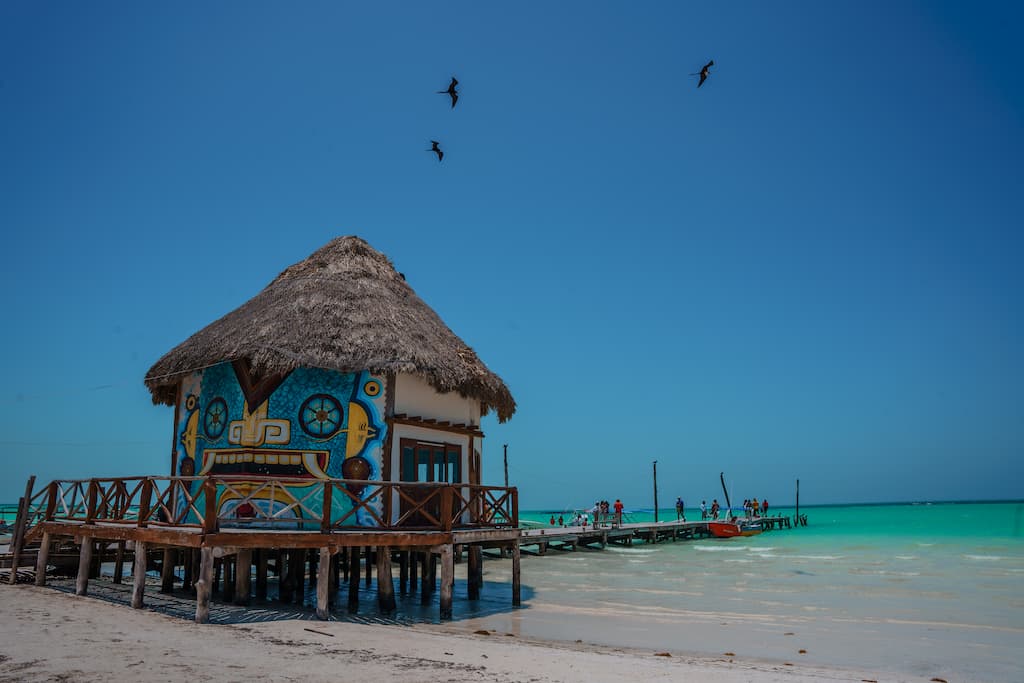
What happens if you drink the water in Mexico is a good question to ask – and a situation that it is best to be prepared for.
First of all, don’t panic. You would be very unlucky to get sick from a very small ingestion of water, such as in the shower or bath or if you accidentally brush your teeth with tap water, so try not to worry.
Inadvertently drinking a glass of water will pose a much greater risk.
Again, try not to worry – remember that many people do not get sick when travelling in Mexico. Keep yourself hydrated with safe bottled water and look out for warning signs such as stomach cramps and fever, especially in children.
PRO TIP
If you have not packed any rehydration sachets in your luggage, pop to the nearest pharmacy and pick some oral rehydration solution, just in case.
What is Montezuma’s Revenge?
Drinking the water in Mexico runs the risk of contracting Montezuma’s Revenge.
Despite its name, Montezuma’s Revenge is not an illness found solely in Mexico. This form of travellers’ diarrhoea – which is characterised by the abrupt onset of loose stools and abdominal cramps – has different names depending on where you are in the world. It is called Pharaoh’s Revenge in Egypt, Bali Belly in Indonesia or Delhi Belly in India.
It may be a trip off the tongue light-hearted name, but the illness is anything but lighthearted or fun.
In addition to stomach cramps and urgent diarrhoea, it can also cause nausea, vomiting and a high fever. The illness can seriously debilitate you and affect your entire hard-earned, once-in-a-lifetime trip.
Most cases will clear up with rest and rehydration in 1-3 days however, some cases can be more serious and prolonged and will require medical or hospital interventions for dehydration, particularly in children.
Montezuma’s Revenge, or traveller’s diarrhoea, is caused by ingesting a form of E-coli that our body and own natural gut bacteria are not used to and cannot handle. It is usually caught from eating food or drinking water in a new, unfamiliar country. It is best avoided by being careful with what you eat and drink – and that includes Mexico drinking water.
Taking care not to drink the water in Mexico or having to purify your own may feel annoying and a little restrictive. However, it is worth remembering that, according to the Centre for Disease Control and Prevention, 30 – 70 % of travellers will experience a gastrointestinal illness whilst travelling abroad.
What bacteria is in Mexico water?
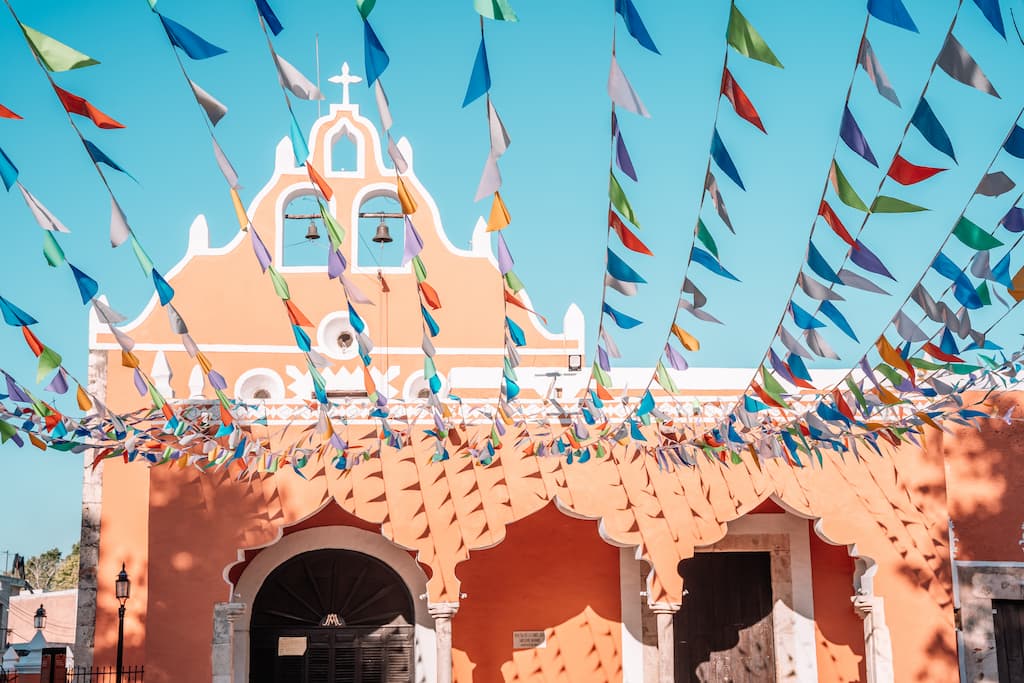
If you are wondering why you can’t drink the water in Mexico it is because – like many other countries in the world – water in Mexico hosts a wide range of bacteria, heavy metals and water-borne viruses.
There is also, sadly, some natural water pollution due to the discharge of domestic waste as well as industrial, agricultural and mining waste (just as there is in many other countries).
The difference in Mexico is found in the standard of filtration and local water systems. You can expect to find bacteria such as total coliform bacteria and Escherichia coli (E- coli) which is the bacteria responsible for Montezuma’s Revenge.
This is why you won’t find many Mexicans who drink tap water.
🤔 FAQ: Drinking Water In Mexico
Once you start thinking about everything you use water for other than drinking, there are inevitably more questions to ask about using water in Mexico.
The following FAQ will help to answer the most commonly asked questions.
Can you brush your teeth with water in Mexico?
No, it is generally considered not safe to brush your teeth with tap water in Mexico in case you swallow some of the water.
Only use bottled water for brushing your teeth and for rinsing your toothbrush or mouth afterwards.
PRO TIP
Keep a bottle of water on your sink or next to your toothbrush to remind you to use bottled water, as it is easy to forget when you are tired or sleepy.
It is also essential to supervise kids when brushing their teeth in Mexico.
Can you drink coffee in Mexico?
Yes, you can drink coffee in Mexico, which is made using either bottled water or tap water.
If using tap water, make very hot coffee with boiling water that has been boiled continuously for at least five minutes.
However, to avoid any doubt or worry about contamination, use bottled water for coffee. Bottled water is safer, but it also tastes better for coffee drinking in Mexico.
Is it safe to drink water in Mexico?

If you are wondering ‘can I drink water in Mexico; the answer is yes, but ONLY bottled or self-purified water.
Drinking water in Mexico from the tap is not safe to drink. It may be free of charge and easy to do, but there is a good chance it could make you very sick and ruin your holiday. Some water-borne bacteria will make you sick for a few days, whilst others can cause long-lasting damage to your gut. The risk just isn’t worth it.
Bottled water is safe to drink in Mexico so always use sealed, unopened bottled water or purified water that you have purified yourself.
Can you drink water in Cancun?
No. Despite its excellent tourist infrastructure, you can not drink tap water in Cancun.
The water in 5-star hotels and 5-star resorts in Cancun still comes from the same place and travels through the same pipes as everyone else’s water (unless otherwise indicated by the hotel). And, if you are wondering can you drink the water in Cancun hotel zone, the answer is still no.
All drinking water in Cancun from the tap is not safe to drink.
Is bottled water safe in Mexico?
Yes, bottled water is safe to drink in Mexico.
However, always make sure you open the bottle yourself and that the seal is intact before opening. If an already opened bottle of water is served to you in a restaurant or bar, send it back and ask for a sealed bottle.
As so many people in Mexico drink bottled water, you will find it for sale everywhere you go. Bottled water is low cost (though it will cost more in hotels and resorts), with bottle sizes ranging from 500ml all the way up to 20 gallons.
Can you drink boiled tap water in Mexico?
You can drink boiled tap water if it has been boiled correctly for a sustained period of time in a clean pan or kettle and if your drinking receptacle is also clean and sanitised.
However, boiling your own water will not remove any sediment or particles. For safety and for taste, it is always better to play it safe and stick with bottled or purified water.
What is in the water in Mexico that makes you sick?
Like many other countries in the world, Mexico’s water system is old, outdated, under-resourced and lacking investment.
Ineffective water filtration and water flowing through old, damaged pipes put the water at risk of contamination from water-borne bacteria or viruses. It is these bacterias in Mexico water (such as giardia and E-coli) that affect your gut and make you sick.

Conclusion: Drinking Water In Mexico
Drinking water in Mexico is essential to keep you healthy and fit on your Mexico vacation. But it is imperative to drink the right kind of water.
The simple and emphatic answer to can you drink water in Mexico from the tap or faucet is no. There is no guarantee the water is clean, free of bacteria and safe to drink.
You can drink sealed bottled water from a reputable brand or seller. Bottled water in Mexico is cheap and available everywhere, but it is worth trying to source bottles that can be recycled or sterilised for reuse.
Another option to ensure clean, safe drinking water in Mexico is to carry your own sustainable purification method.
Whilst any personal water filtration system is never as easy as buying bottled water, it will save you money in the long run and will save our planet from the scourge of single-use plastic.
Drink water in Mexico with care, and you will be giving yourself the best protection and the best chance of enjoying a fabulous trip of a lifetime to this very special part of the world.
READ MORE

